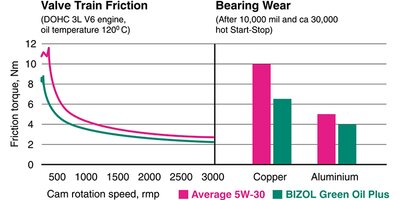FIVE SIGNS OF CONTAMINATED FUEL INJECTORS
What happens if fuel injectors are dirty?
A frequently underestimated problem that many mechanics are certainly familiar with is deposits on and in the injectors. Causes for the deposits are often a low fuel quality or missed maintenance intervals of the customers. Particularly in diesel-powered vehicles, deposits on the injectors are noticeable through an unbalanced spray pattern. This usually has negative consequences for the engine performance: injection takes place in an unbalanced fuel-air mixture, which leads to a reduced efficiency in fuel combustion. Let’s learn more about the signs of contaminated fuel injectors.
How can I recognise the signs of contaminated fuel injectors in the injection system?
The five most common symptoms are:
1. an unsteady idling
2. a stuttering engine
3. a lower power delivery
4. increased fuel consumption
5. poorer exhaust gas values
1. Unsteady idling and speed fluctuations
Perhaps your customers have asked you why they experience speed fluctuations at idle after starting the engine or standing at traffic lights. If the problem also occurs when the foot is not in contact with the accelerator, this could be a sign of dirty injectors.
2. Vibrations and a stuttering engine
Depending on the pollution level, this phenomenon can progress to such an extent that the delicate balance between fuel injection and air intake becomes so disproportionate vibrations might occur or the engine starts to stuttering.
3. Less performance and less power delivery
Depending on the degree of soiling, very strong losses in power development can also occur in terms of driving behaviour. The combustion of the fuel-air mixture can be so incomplete that losses in power are noticeable when the vehicle accelerates.
4. Increased fuel consumption
Like many other components in a motor vehicle, the injectors become dirty over time. At the latest, when the customer notices increased fuel consumption at the filling station and cannot find any other cause for this, this can be an indication of dirty injectors in the injection system.
5. More exhaust gas values and emissions
If the unburned fuel content in fuel emissions increases, this also has a negative impact on exhaust emission values. Exhaust aftertreatment systems are additionally burdened by the unburnt residues during combustion.
Clean and protect dirty injectors
In order to give them the best possibility to clean the dirty injectors in the workshop, BIZOL has developed Pro Gasoline System Clean+ p80 and Pro Diesel System Clean+ p60. The highly concentrated detergents can be introduced into the fuel circuit without removing the injectors and thus clean them. Special Deposit Control Additives (DCA) prevent the premature formation of deposits in the fuel system, on the valves and on and in the injectors in the long term. A first professional cleaning of the fuel system should be carried out after 80,000 to 100,000 km and then every further 60,000 km.

You might also like

Prof. Dr. Boris Zhmud, Head of R&D, BIZOL Germany

Within the realm of automotive care, few substances are as vital as motor oil, in ensuring the seamless operation of a vehicle's propelling device. It serves as the lifeblood of a motor, ensuring that the intricate machinery operates efficiently and without unnecessary friction. The functions of motor lubricant substance extend far beyond just lubrication, encompassing a range of critical tasks that contribute to the longevity and performance of a propelling mechanism. In this article, we’ll delve into the multifaceted functions of motor oil and explore how it plays a pivotal role in maintaining the health of automotive powerhouses.

The modern marvel of an internal combustion motor powers our vehicles, providing the strength and reliability we rely on for daily transportation. However, just like anything else subjected to constant use, motorized units experience wear and tear over time. Component deterioration can significantly impact performance and longevity. In this article, we will delve into the intricacies of engine wear meaning, explore the various causes behind it, provide actionable tips to reduce and prevent it. Furthermore, we will look at how specialized engine oils, such as BIZOL, play a crucial role in safeguarding your engine’s health. Let’s begin by understanding what engine wear is and the factors that contribute to it.

